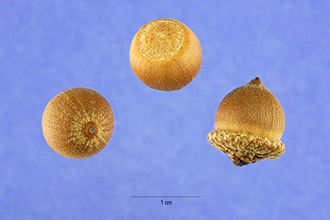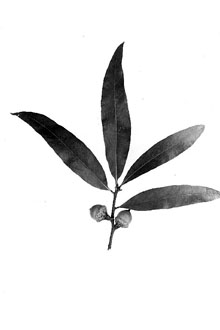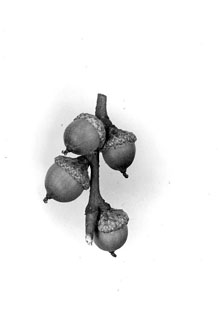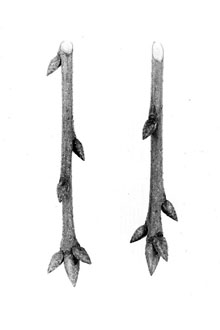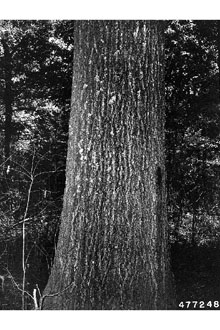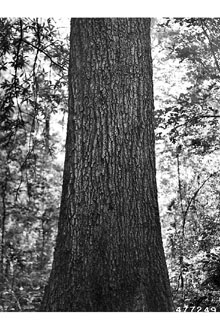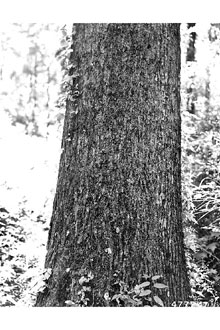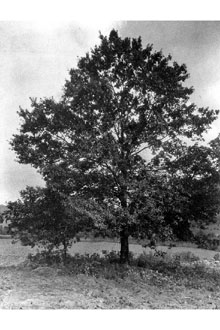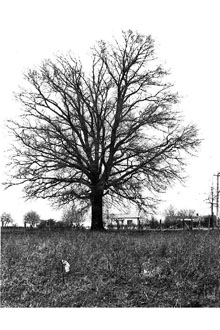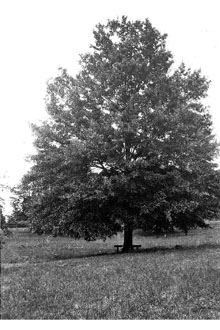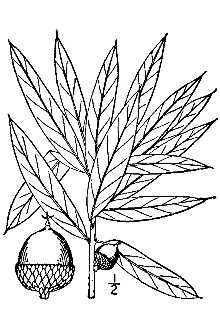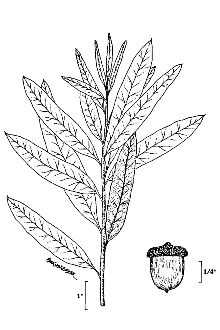Willow Oak
Scientific Name: Quercus phellos L.
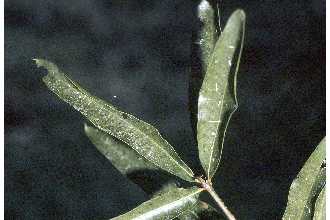
| General Information | |
|---|---|
| Usda Symbol | QUPH |
| Group | Dicot |
| Life Cycle | Perennial |
| Growth Habits | Tree |
| Native Locations | QUPH |
Plant Guide
Use a soil moisture meter to monitor the soil moisture where Willow Oak is planted.
Fact Sheet
Alternate Names
peach oak
Uses
Erosion Control: Willow oak is a good tree species to plant along margins of fluctuating-level reservoirs. Wildlife: Its acorn is relished by game animals and birds such as ducks, squirrels, deer, and turkey, blue jays and red-headed woodpeckers. Grackles, flickers, mice and flying squirrels utilize the tree itself. Timber: The wood is used for lumber, crossties, construction and pulp. Recreation and Beautification: Willow oak is widely planted as an ornamental and shade tree.
Status
Please consult the PLANTS Web site and your State Department of Natural Resources for this plant’s current status (e.g. threatened or endangered species, state noxious status, and wetland indicator values).
Description
Quecus phellos L., willow oak grows mainly in bottomlands of the Coastal Plain from New Jersey and southeastern Pennsylvania south to Georgia and northern Florida; west to eastern Texas; and north in the Mississippi Valley to southeastern Oklahoma, Arkansas, southeastern Missouri, southern Illinois, southern Kentucky and western Tennessee. Willow oak is a medium to large-sized tree that grows up to over 100 feet tall, with a trunk 3 to 6 feet in diameter. It has thick, smooth, light-reddish bark when young; which becomes roughened and divided into narrow ridges on older trees. The leaves are simple, alternate, deciduous, elongated and slender, with smooth edges; they are light green and shiny above, dull and paler below with distinct venation. The small, round, brown acorns are usually produced singly or in pairs with a shallow, saucer-shaped cap. The overlapping scales that make up the cap are thin, hairy, and dark red. There are about 462 acorns per pound.
Adaptation and Distribution
Distribution
Distribution
Robert H. Mohlenbrock USDA NRCS 1995. Northeast Wetland Flora @USDA NRCS PLANTS Willow oak is well adapted to moist, well-drained, acid soils and full sun or light shade. For a current distribution map, please consult the Plant Profile page for this species on the PLANTS Website.
Establishment
Natural regeneration is principally through sprouts from stumps of small trees and advance reproduction. Larger diameter stumps do not sprout readily. Willow oaks may be established by planting acorns. Acorns collected in the fall may be sown immediately or kept in cold storage until spring. The seedbed must be kept moist, well-aerated with an inch or more of leaf litter. Seedlings are very intolerant of saturated soil except during dormancy. Although only moderately tolerant to shade, seedlings may persist for years under a forest canopy, continually dying back and resprouting. One to two year old bareroot plants may also be used for field plantings.
Management
Thinning of a stand of trees may be necessary to encourage development of larger willow oaks, Use soil moisture sensors to measure the soil moisture of Willow Oak., Willow oak’s principal enemy is fire, Seedlings and saplings are readily killed by even a light burn; hot fires kill larger trees, Canker infected trees should be removed immediately both to salvage the log and to protect other trees,
Plant Traits
Growth Requirements
| Temperature, Minimum (°F) | -23 |
|---|---|
| Adapted to Coarse Textured Soils | No |
| Adapted to Fine Textured Soils | Yes |
| Adapted to Medium Textured Soils | Yes |
| Anaerobic Tolerance | Low |
| CaCO3 Tolerance | None |
| Cold Stratification Required | Yes |
| Drought Tolerance | None |
| Fertility Requirement | Medium |
| Fire Tolerance | Low |
| Frost Free Days, Minimum | 180 |
| Hedge Tolerance | None |
| Moisture Use | High |
| pH, Maximum | 6.5 |
| pH, Minimum | 4.5 |
| Planting Density per Acre, Maxim | 800 |
| Planting Density per Acre, Minim | 300 |
| Precipitation, Maximum | 70 |
| Precipitation, Minimum | 40 |
| Root Depth, Minimum (inches) | 12 |
| Salinity Tolerance | None |
| Shade Tolerance | Intolerant |
Morphology/Physiology
| Bloat | None |
|---|---|
| Toxicity | None |
| Resprout Ability | Yes |
| Shape and Orientation | Erect |
| Active Growth Period | Spring and Summer |
| C:N Ratio | High |
| Coppice Potential | No |
| Fall Conspicuous | Yes |
| Fire Resistant | No |
| Flower Color | Yellow |
| Flower Conspicuous | No |
| Foliage Color | Green |
| Foliage Porosity Summer | Dense |
| Foliage Porosity Winter | Porous |
| Foliage Texture | Fine |
| Fruit/Seed Conspicuous | Yes |
| Nitrogen Fixation | None |
| Low Growing Grass | No |
| Lifespan | Long |
| Leaf Retention | No |
| Known Allelopath | No |
| Height, Mature (feet) | 100.0 |
| Height at 20 Years, Maximum (fee | 60 |
| Growth Rate | Rapid |
| Growth Form | Single Stem |
| Fruit/Seed Color | Brown |
Reproduction
| Vegetative Spread Rate | None |
|---|---|
| Small Grain | No |
| Seedling Vigor | Medium |
| Seed Spread Rate | Slow |
| Fruit/Seed Period End | Fall |
| Seed per Pound | 462 |
| Propagated by Tubers | No |
| Propagated by Sprigs | No |
| Propagated by Sod | No |
| Propagated by Seed | Yes |
| Propagated by Corm | No |
| Propagated by Container | Yes |
| Propagated by Bulb | No |
| Propagated by Bare Root | Yes |
| Fruit/Seed Persistence | No |
| Fruit/Seed Period Begin | Summer |
| Fruit/Seed Abundance | High |
| Commercial Availability | Routinely Available |
| Bloom Period | Mid Spring |
| Propagated by Cuttings | No |
Suitability/Use
| Veneer Product | No |
|---|---|
| Pulpwood Product | Yes |
| Post Product | No |
| Palatable Human | No |
| Palatable Browse Animal | High |
| Nursery Stock Product | Yes |
| Naval Store Product | No |
| Lumber Product | Yes |
| Fuelwood Product | High |
| Fodder Product | No |
| Christmas Tree Product | No |
| Berry/Nut/Seed Product | No |

